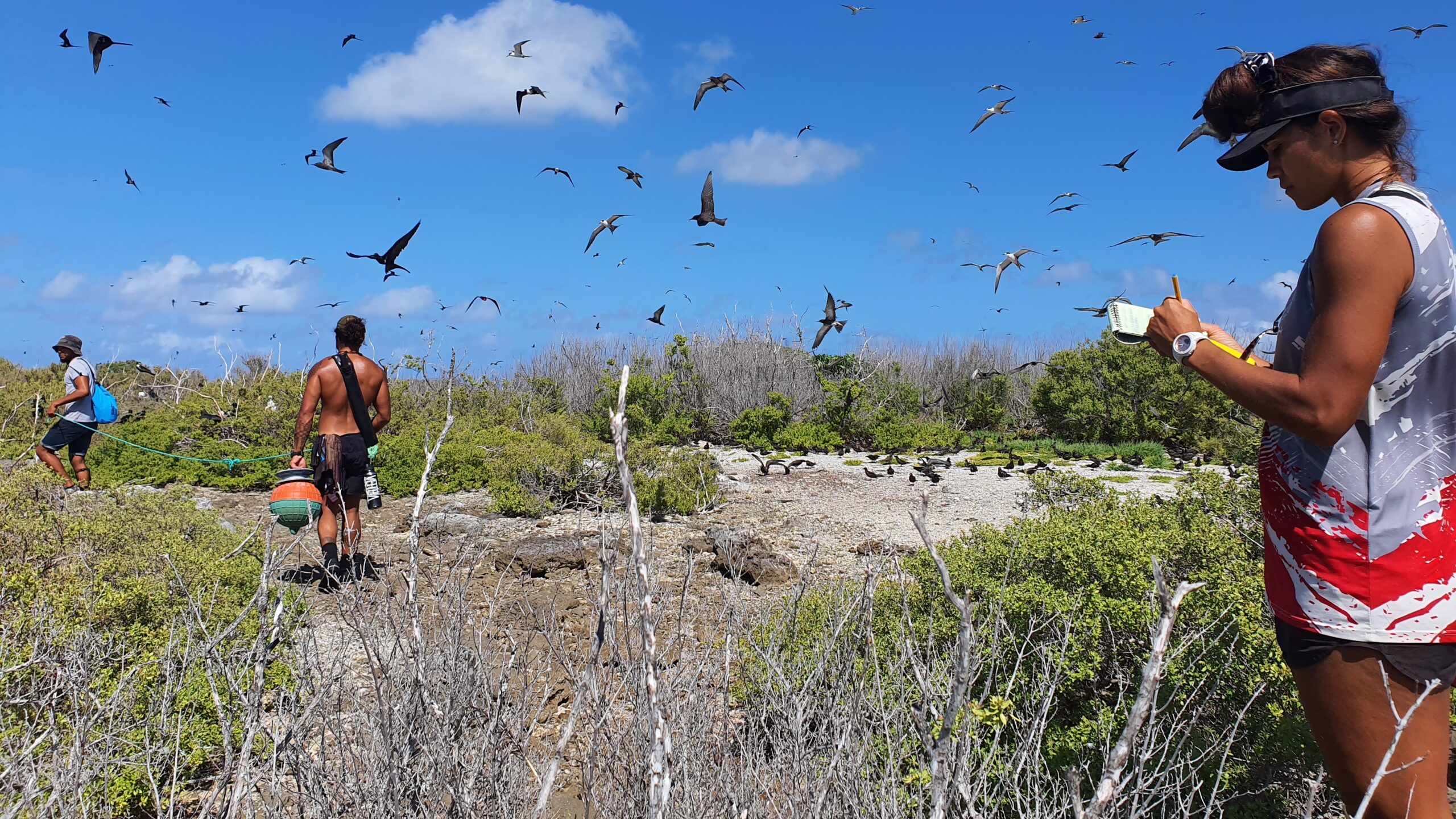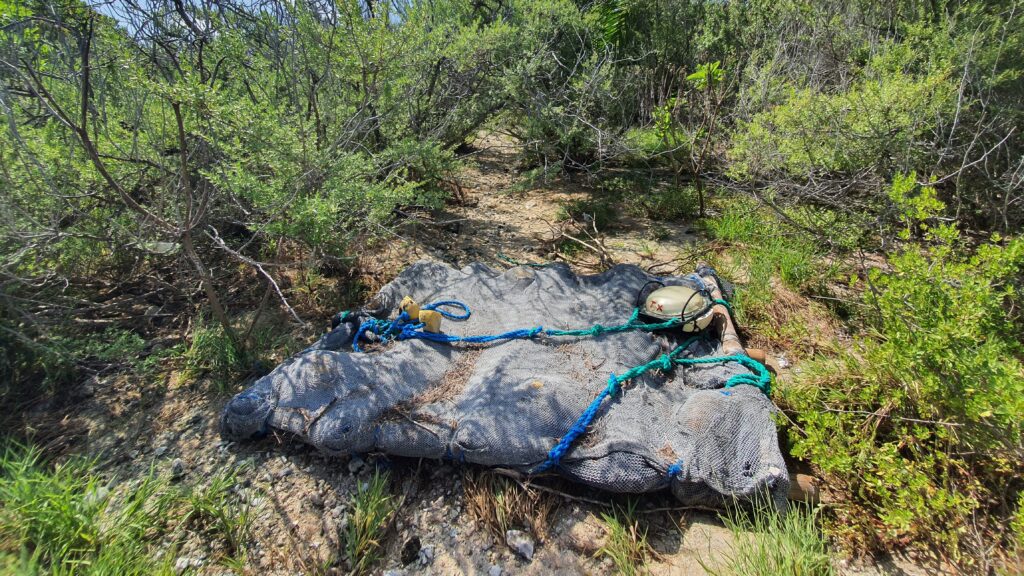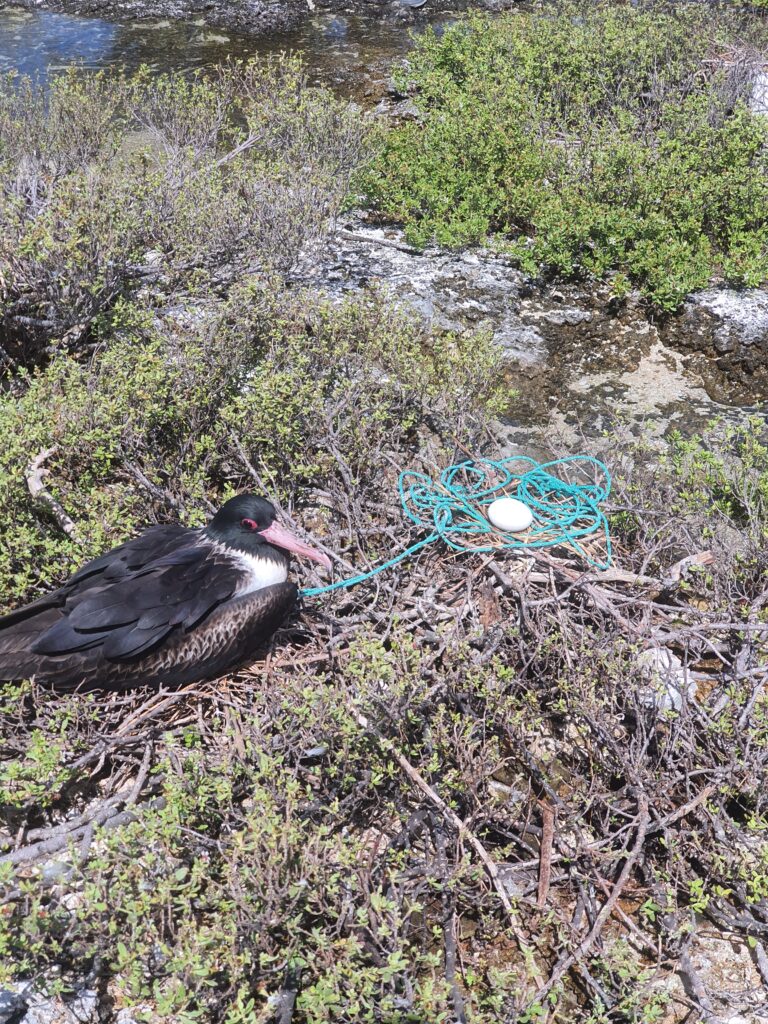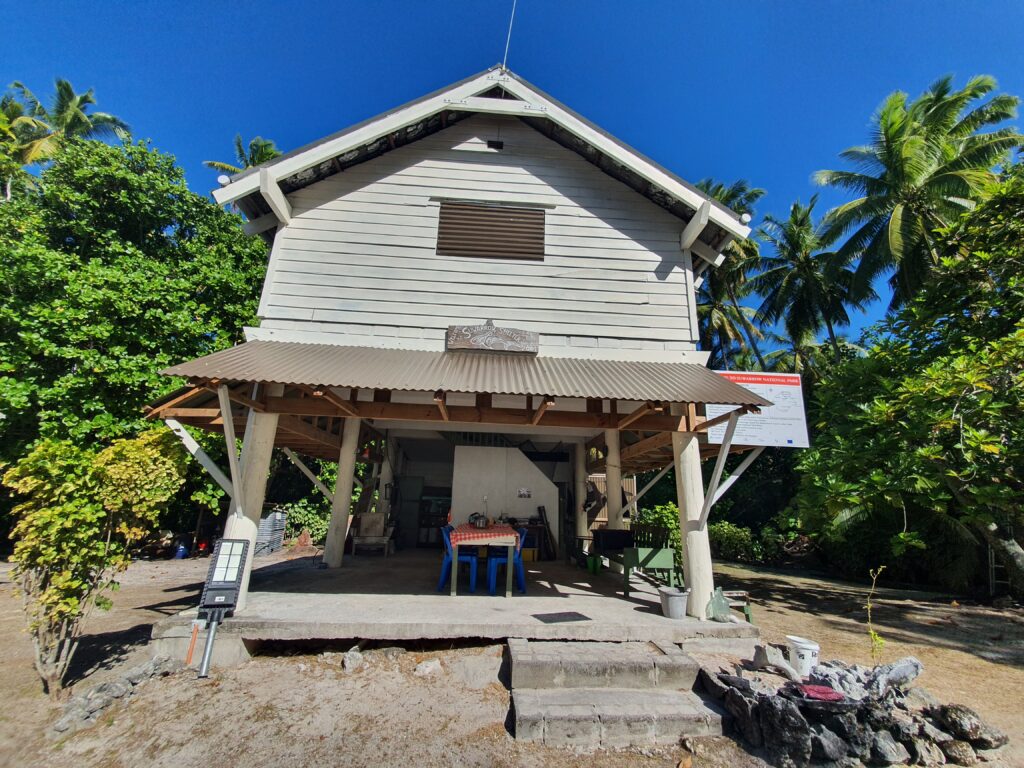Saving the birds of Suwarrow
Saturday 9 July 2022 | Written by Te Ipukarea Society | Published in Features, Weekend

Seabird surveys conducted on Manu islet. Te Ipukarea Society/22070864
On Thursday night, June 30 at about 11pm, vaka Marumaru Atua slipped quietly into Avatiu harbour and tied up at the currently vacant Kukupa berth. This was 23 days, seven hours and 10 minutes after leaving Avarua harbour on June 7 for a voyage of fun, hard work and adventure to Suwarrow Atoll National Park.
Te Ipukarea Society chartered the vaka to Suwarrow for the purpose of eradicating the last known population of kiore Pacific rats on the atoll. Previous attempts in 2013 and 2018 had been reasonably successful at getting rid of the rats, but during a monitoring trip last year, also on the vaka, Te Ipukarea Society staff found that there were rats still remaining on one small motu on the western side of the atoll.
We arrived into Anchorage on Suwarrow after three days and 19 hours of sailing. Winds were with us on the trip, so it was a very pleasant trip. Fortunately, Harry Papai, the National Environment Service ranger, had arrived the week before and was there to meet us. He was to be joined by Teina Vakapora who we brought up on the vaka making the second ranger for 2022.
The first day of arrival Harry kindly agreed to take 12 of us straight across to the west side of the atoll, to set up camp on Motu Tou. Three of the senior vaka crew stayed behind on Marumaru Atua to keep her safe. We had a bit of cargo so had to make two separate trips.
We had planned to bait the motu with the rats, Kena Nui, as well as the adjacent smaller Kena Iti, in case the rats had spread further since last year. So next morning we waded across the channel separating motu Tou from the two Kena motus, and distributed 12 buckets of rat bait strategically around the motu for later dispersal.

We then cleared the tracks and established the rat baiting stations. This was done by using bush knives to create a grid of 20 metre by 20m squares. With so much extra manpower courtesy of the vaka crew, this job did not take long at all. We were soon back at camp on Motu Tou in plenty of time for lunch.
After a few hours rest, it was back to the motu to hand throw the bait. We spread two kilogram of bait pellets thoroughly in every direction from each of the grid intercepts. By making sure our throw was good enough to reach at least 10 metres in every direction, we were able to ensure that every square metre of motu was covered.
That night and the next day we started a coconut crab survey on Motu Tou by catching and numbering coconut crabs. They were marked using a white twink marker on their back shell, starting from number one (1). Altogether we tagged 160 crabs by the time we headed back to Anchorage motu on Tuesday, where we stayed for the next week.
During this time, with Harry’s assistance, we conducted bird surveys on a number of the motu. We also helped clean up around the cyclone shelter where the rangers are stationed by weeding and clearing coconuts and kikau that had built up over the months that Harry had been away. There was also the opportunity to attend daily yoga sessions by Ana. Coconut crabs are also quite common on Anchorage, so we did another crab survey as well.

After a week on Anchorage we went back to Motu Tou to camp on Monday, to do a second round of baiting. Only seven of us went on this occasion, as the rest of the vaka crew were required to prepare Marumaru Atua for the sail home. We surveyed birds on Motu Tou, as well as rubbish around the motu. There were easily 50 drifting fish aggregation devices (FADs) washed up, and an astronomical number of plastic water bottles as well as fishing ropes, floats, and other waste from industrial fishing fleets.
We did the second round of rat baiting on Tuesday afternoon. We purposely chose late afternoons to bait as that is when the rats start to come out in search of food. That evening there was a bit of rain, which can have some impact on the bait. As we had enough bait left, we did a third round of baiting on Kena Nui on Wednesday morning, to further improve the chances of success. While we were doing that, we heard Harry approaching in the ranger boat to collect us. Time to head back to the vaka, load up, and leave Suwarrow till the next time!
Over the following eight and a half days, we battled south easterly winds on our bow as we slowly made our way back to Rarotonga. We decided to take shelter at Palmerston for two nights to let the winds improve. Although we could not get ashore due to Covid restrictions, we were still very well looked after by the people of Palmerston, especially the mayor Bill Marsters and his family, and Arthur Neale, the executive officer. Along with the nu, fish, and akari, we even had a delivery of French toast for breakfast and ice cream to make our last leg to Rarotonga more pleasant.
Sometime in the next 12 to 24 months, there will need to be a monitoring trip to Suwarrow to ensure the last rat is indeed gone. Meanwhile, Suwarrow continues to provide a home to a diverse range of seabird species, and of course the coconut crabs!

A big thank you to the contributors to this trip, including the Cook Islands Voyaging Society, BirdLife International, the National Environment Service, David and Sarah Gordon, David Greig, Triad Petroleum and the numerous people who gave through our Give-a-little page or directly to us.
If you would like to hear a bit more about the trip, and see a brief video presentation on the work that was carried out, come along to Te Ipukarea Society Annual General Meeting on Wednesday, July 13, 4.30pm at Karika Palace behind the court house.















































